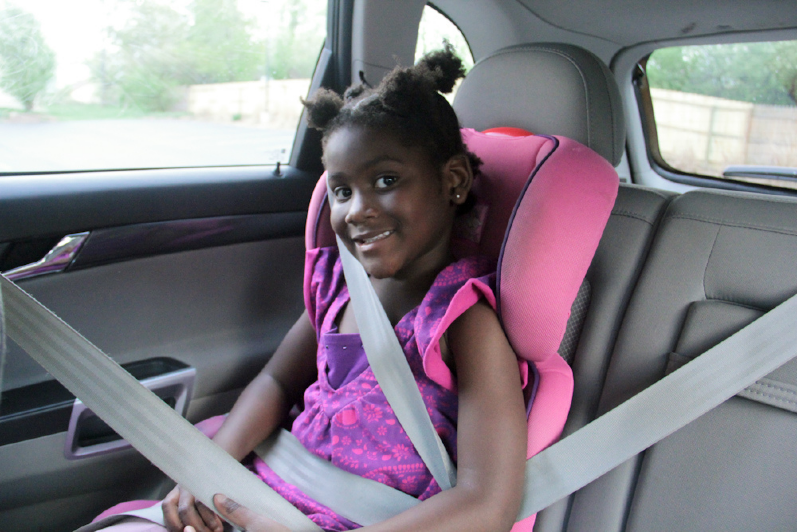
In the United States, motor vehicle related crashes are the leading cause of death for children and teenagers ages 3 and older. Proper use of child safety seats have been reported to be highly effective in reducing motor vehicle related injuries among children. The head is the most frequently injured region of the body in motor vehicle crashes.
Infants and toddlers should ride rear-facing in appropriate car safety seats until age 2 or until they outgrow their convertible car safety seat by weight and height. The rear-facing position significantly reduces a child’s risk for serious injury in a frontal crash protecting the head, neck and spine. Weight limits can vary per manufacturer, usually between 22 to 35 pounds for infant carriers. When the top of the child’s head is within 1 inch of the top of the infant carrier, the child is too tall for the carrier. The child should be transitioned to a rear-facing convertible seat. Studies have shown no evidence of increased risk of lower-extremity injuries while riding rear-facing in the appropriate fitting rear-facing convertible car seat.
Children ages 2 and older and those who have outgrown their convertible car seats should ride forward facing in a 5 point harness until they outgrow the seat by weight or height, and after age 4.
Children who have outgrown their forward-facing seat after age 4 should be either in a high-back or low-back booster seat until the lap and shoulder belt fit properly. This helps reduce the risk of seat belt syndrome where a combination of neck, spine and abdominal injuries can occur as the result of a seat belt that does not fit properly. High-back booster seats are important to use where there is a lack of a head rest to help protect the child from whiplash and injuries to the neck.
Children who outgrow their booster seat may sit in the back seat. Children should be at least 4’9″ tall and between 8 to 12 years of age. The child should be able to sit with their back against the seat with their legs bent naturally at the seat end. The seat belt fits low and snug over hips and thighs. The shoulder portion of the seat belt crosses the middle of the chest and shoulder, does not ride up over the neck or face. It should never by worn under the arm or behind the back.
The AAP recommends that all children younger than 13 years of age ride in the back seat for maximum protection in a crash. When installing car safety seats, it is recommended that they are examined at car safety events, the fire station, or local hospital for proper installation.
Children should not be left alone in a car or around parked cars. Parents are reminded to always check the back seat for children before walking away.
MacKoul Pediatrics is an amazing local pediatrics office in Cape Coral, FL where caring, compassionate doctors and nurses work with you to keep your children as healthy as possible. MacKoul cares for children from birth to college age, from Cape Coral, Fort Myers, Naples, and beyond.
Revised December 5, 2021
July 10, 2014
